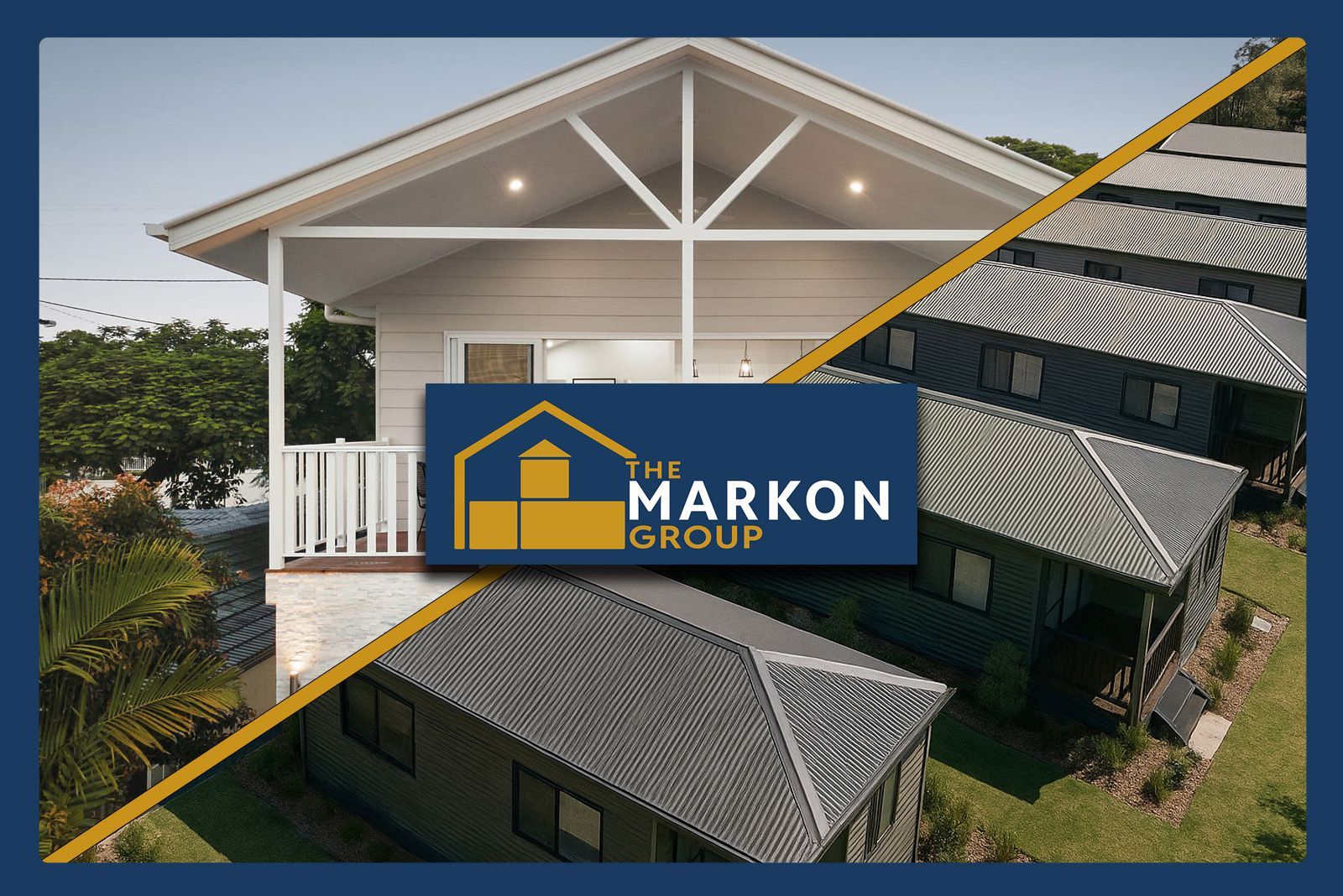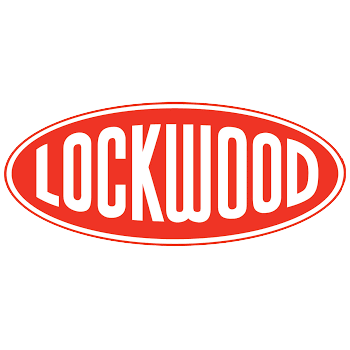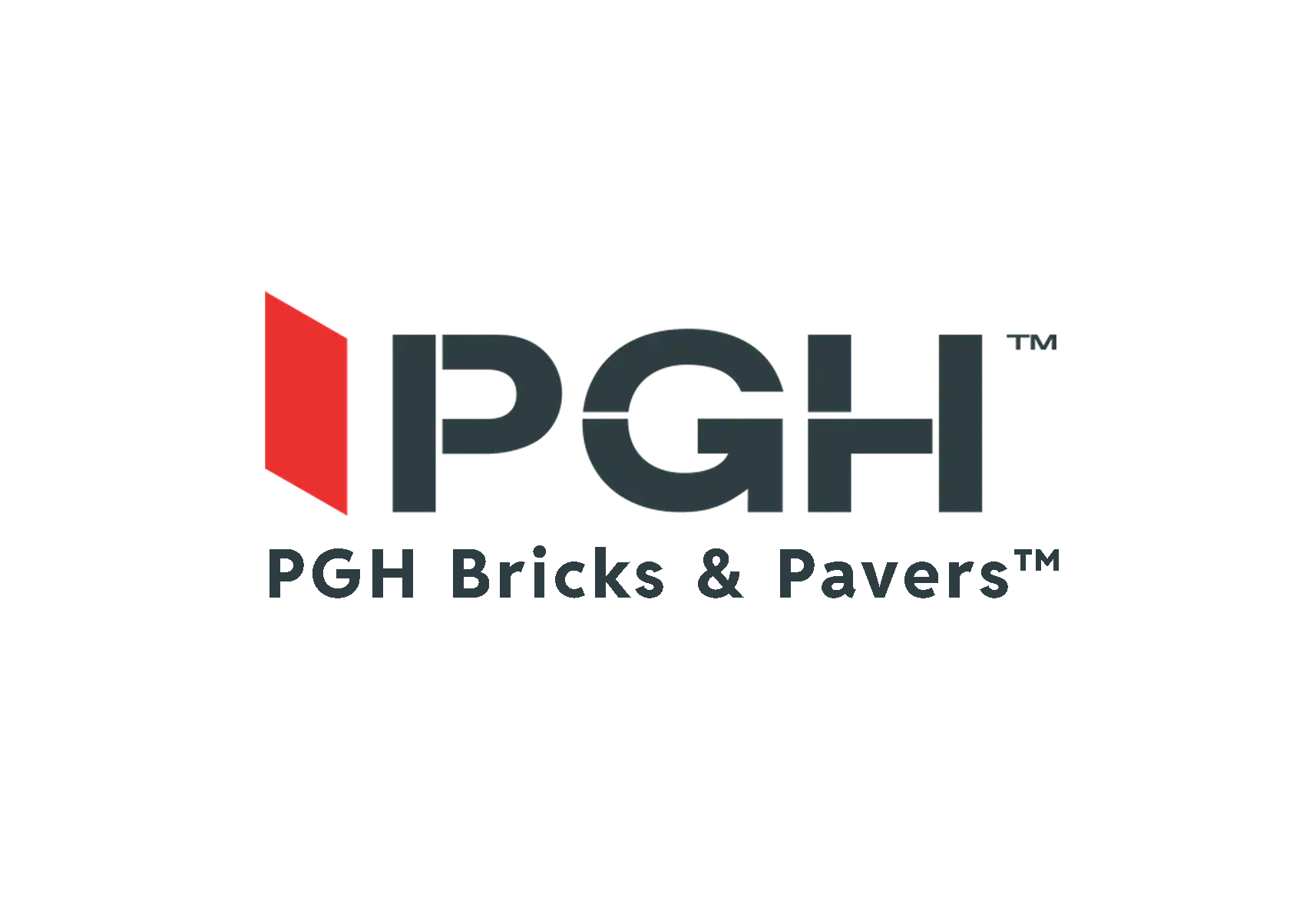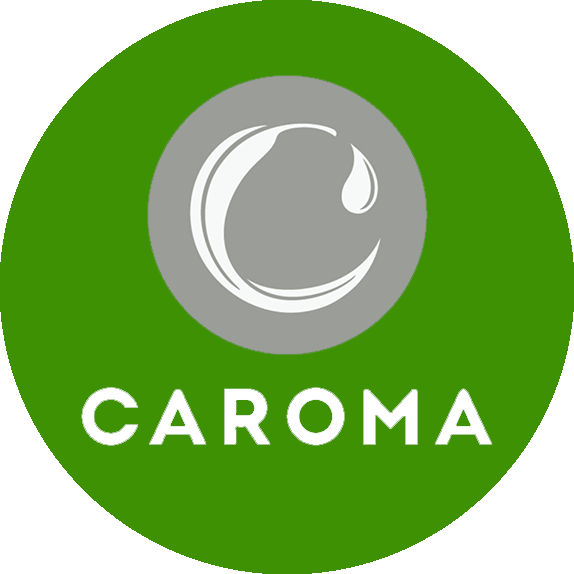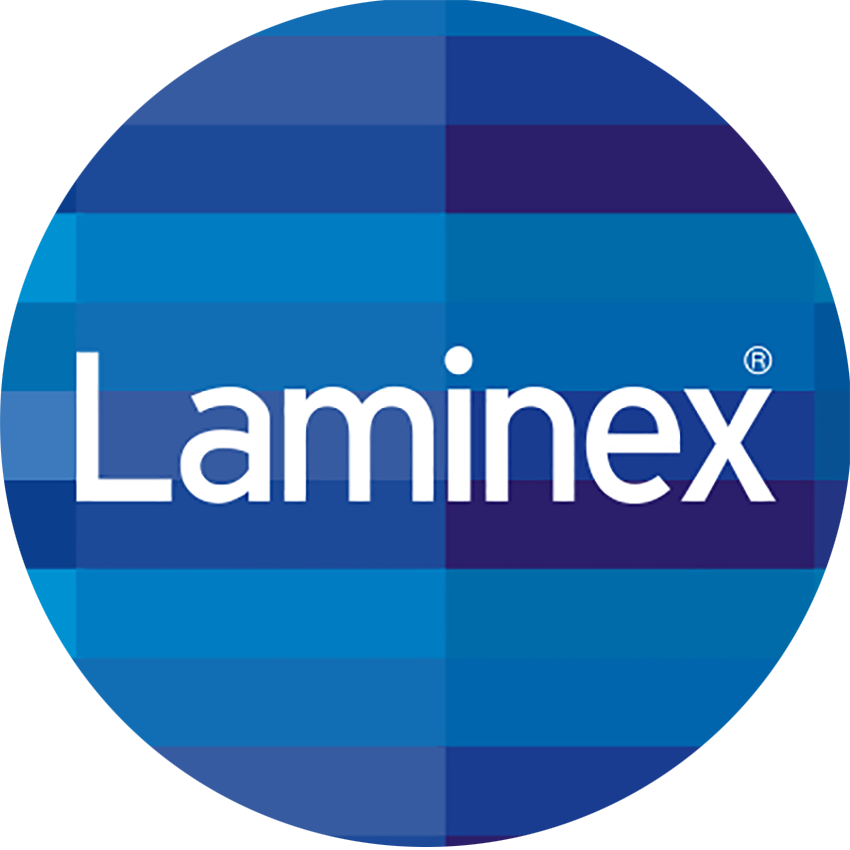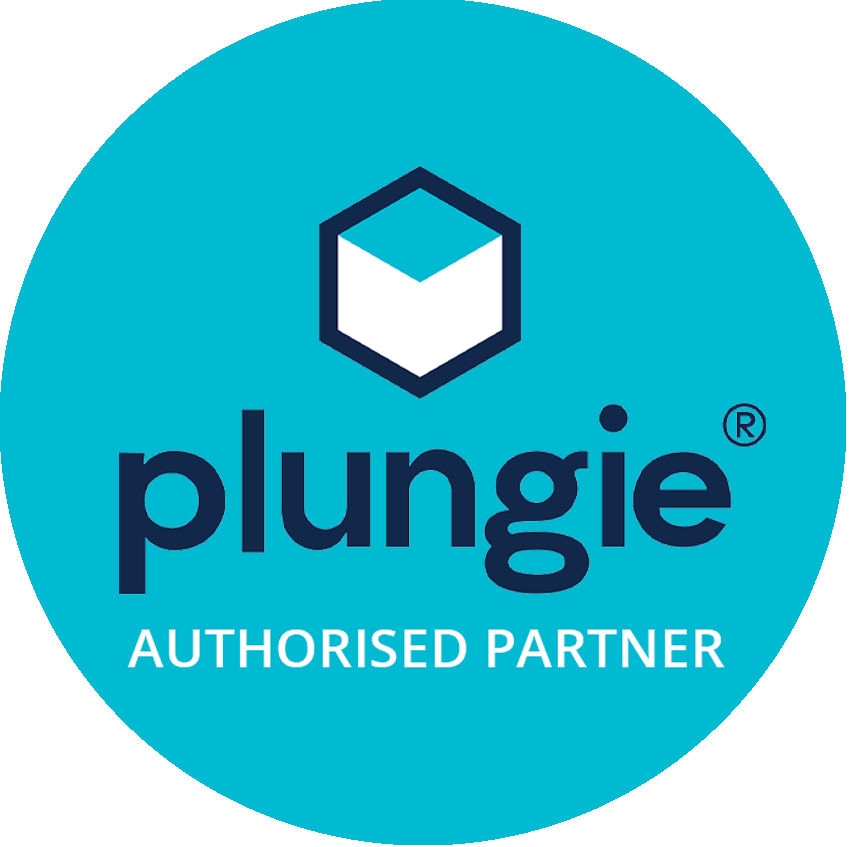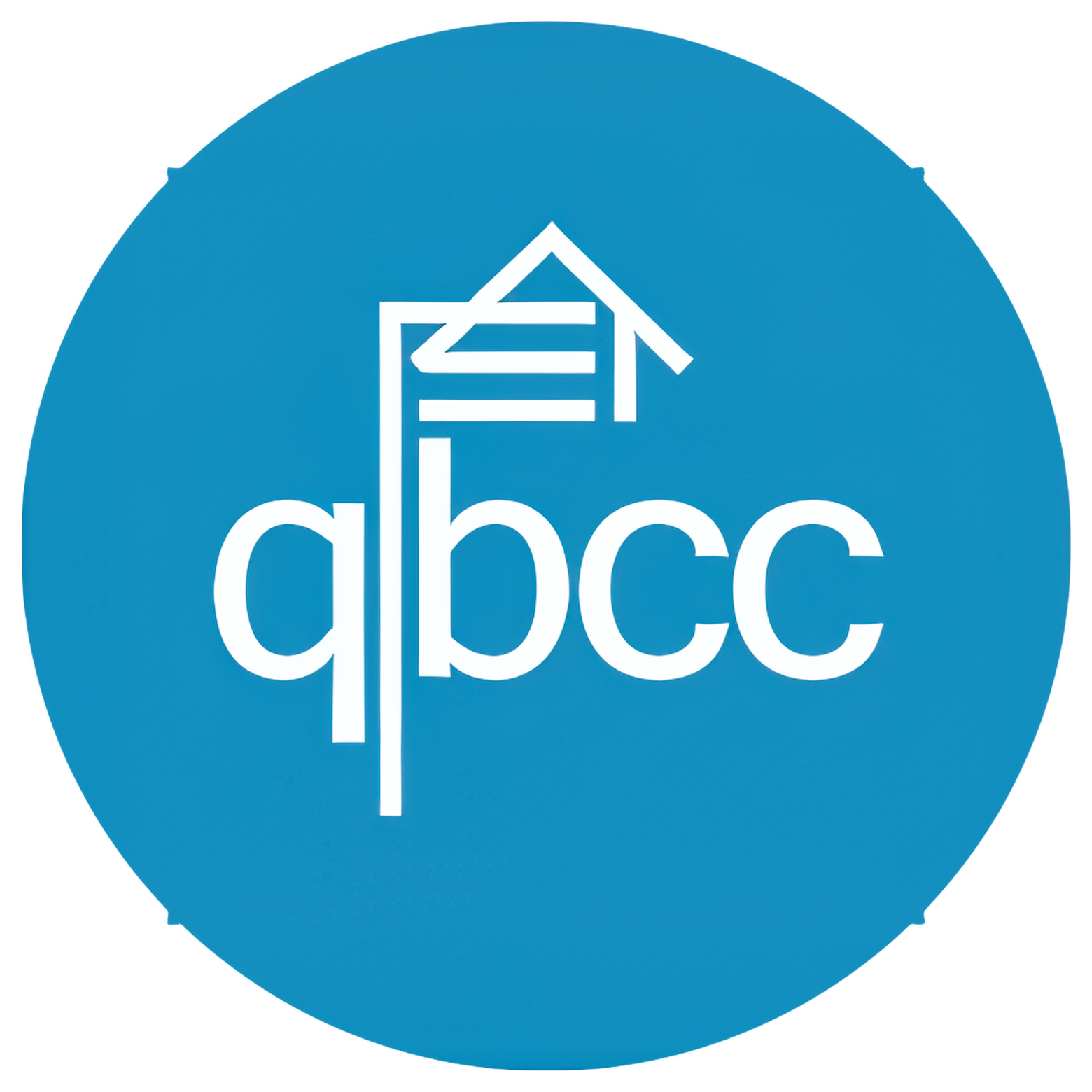The Truth About Custom Home Building: Why It’s Not as Expensive as You Think
Breaking Free From the Cookie-Cutter Trap

The Truth About Custom Home Building: Why It’s Not as Expensive as You Think
Breaking Free From the Cookie-Cutter Trap:
If you’ve ever walked through a glossy builder’s display village, you know the feeling—house after house with the same polished look and predictable layout. It’s easy to be lured in by those model homes and their promise of an easy, affordable build. But you might also leave thinking that to get something truly “you” in your home, you’d have to pay a fortune. We’re here to turn that thinking on its head.
In this post, we’ll dispel the myth that custom home building is significantly more expensive than picking a standard plan. The truth? Building a one-of-a-kind home with a company like The Markon Group can be surprisingly cost-effective—often comparable in price to those cookie-cutter houses once you add up all the “extras” the volume builders leave out.
We’ll show you how Markon’s unique co-design process puts your needs first, preventing costly variations and delivering value from day one. You’ll see detailed comparisons between going custom and going with a standard project builder at each stage: design, planning, construction, and budgeting. And because every homeowner’s needs are different, we’ll explore real-life scenarios—from first-home buyers and growing families to busy professionals, retirees, and multi-generational households—to illustrate how a custom build can fit your lifestyle and your budget. By the end, you’ll see that a home built around you isn’t a luxury reserved for the few—it’s a smart, attainable choice that can save you money and enrich your life for years to come.
The Myth: “Custom Homes Cost a Lot More”
One of the biggest misconceptions in home building is that a custom-designed home will automatically cost significantlymore than a standard “off-the-shelf” house. Yes, it’s true that volume builders (the ones behind those display villages) often advertise lower sticker prices. They leverage economies of scale, building the same designs over and over, and at first glance a mass-produced home appears cheaper. However, the reality is more complex. Once you factor in all the hidden costs and compromises of a cookie-cutter build, a custom home can offer equal or even better value.
Let’s bust this myth with some facts. Volume builders keep their base prices low by providing a bare-bones product – any change or upgrade comes with a hefty markup. For example, even something as simple as changing the way a door swings can cost thousands in a project home, because it requires adjustments to a pre-set plan. More substantial changes – say, moving walls or adapting the layout for a sloping block – drive the price up even further, often making the total cost comparable to that of a fully custom home anyway. In other words, by the time you pay a big builder for all those “extras” to personalize or improve a standard design, you might as well have gone custom from the start.
Volume-built homes often look enticing in the display village, but many standard plans come with hidden extras that drive up the true cost. A custom build can include those features from the start – without breaking the bank.
Hidden costs are the real budget killers in cookie-cutter projects. Many project home contracts list common necessities as “exclusions” – meaning they’re not in the base price. Consider a few examples.
- Site essentials: Items like stormwater drainage, sewer connections, or retaining walls are frequently excluded, yet they’re essential to make your home livable. Adding them later can tack on thousands.
- Driveways & landscaping: That picture-perfect display home with a neat driveway and garden? Those are almost never included by volume builders. You’ll be paying extra to avoid having a mud path out front.
- Quality finishes: Higher ceilings, durable flooring, stone benchtops, or full-height bathroom tiles – features many of us consider standard – often cost extra with a big builder. You might find yourself upgrading flimsy “standard” fixtures to get the quality you want, causing costs to balloon.
Industry experts suggest budgeting at least 10–15% more than a volume builder’s base price to cover such missing pieces. When you factor in these additions, the price gap between a project home and a custom home shrinks dramatically – sometimes it even disappears altogether. You could easily end up spending the same or more to force-fit a generic design into your life (and land) than you would have by designing it right from the start.
In contrast, a well-planned custom build offers more transparency and upfront certainty. You design exactly what you want and get a full picture of costs before you sign a contract, rather than being hit with upgrade fees or surprise variation charges mid-build. As one Australian builder puts it, wouldn’t you rather know all your costs upfront, before committing, instead of receiving a huge bill at the end when it’s too late to adjust?
With a custom home, you avoid paying for features you don’t need (like that extra unused guest room in a pre-designed plan) and you include the ones you actually do need from the beginning. The result is a home tailored to you and a budget that’s under control.
Money Myth-Buster: At The Markon Group, they’ve found that a custom design can often be built for little more than an equivalent-quality “standard” home from a volume builder. In fact, when clients ask “Is a custom home much more expensive?”, Markon’s answer is: Not with us. They design smartly from day one, so your custom home often costs little more than a comparable cookie-cutter build. Custom doesn’t have to mean expensive – by investing a bit more time and thought up front, you can avoid the hidden fees and costly add-ons common with template-built houses.
The bottom line is, “standard” homes aren’t as standard-priced as they appear. And a custom home isn’t reserved for millionaires or the movies. With the right builder and approach, you can get a home that’s uniquely yours without blowing your budget.
Markon’s Co-Design Difference: Starting With Your Ideas
So how is it possible to build custom without the scary price tag? The answer lies in the process. Markon Group’s approach is all about co-design – you and the builders working together from day one – which leads to smarter planning and fewer surprise costs. Unlike many builders who start with a fixed plan and charge you to change it, Markon starts with you. “Forget cookie-cutter homes where you pick from a book of plans and pay extra to tweak them,” says Markon. Your home should be designed around your life from the beginning. That means you’re invited to play an active role in shaping the design, while Markon provides the design expertise and construction know-how to make it real.
How the Co-Design Process Works (and Saves You Money)
Markon has crafted a step-by-step co-design process that’s interactive, transparent – even fun. It ensures that by the time construction begins, everything is well-planned and accounted for (so you won’t be hit with costly changes later). Here’s an overview of how it works:
- Discovery Call & Consultation: It starts with an initial chat about your ideas. Markon gets to know your story – your land (or the kind of block you’re looking for), your preferred area, budget range, and timeline. You can meet the team at their Browns Plains office or have them visit your home – whatever is easiest for you. (Markon proudly serves all of Brisbane, as well as Ipswich and the Gold Coast.) This discovery phase is all about listening to you and understanding your vision.
- Lifestyle Mapping: Next, they delve into your lifestyle and goals. Are you a first-home buyer or upgrading to your second? Planning a family, or accommodating elderly parents down the line? Working from home, or big on entertaining? Markon’s team asks about what matters most to you now and in the future. This ensures the design considers not just your immediate needs but also how your needs might evolve. (For example, a young couple might foresee kids in a few years, or a multi-generational family might need dual living areas – all of that comes out in this conversation.)
- Wish List & Priorities: Here’s where you lay out the specifics of your dream home. How many bedrooms and bathrooms do you want? Need a home office or a media room? Love outdoor BBQs and thus an alfresco area is a must? Prefer a single-story for ease or a double-story for space? Every family has a unique wish list. Markon helps you map out the must-haves versus the nice-to-haves. This prioritization is crucial for balancing desires with budget – you’ll decide what features are non-negotiable and where you might flex.
- Smart Planning & Feasibility: Now the experts step in to refine the ideas against real-world constraints and opportunities. Markon’s designers take your wish list and evaluate it in context of your actual block and budget. They’ll orient the design to suit your land’s shape and environment – considering things like capturing breezes and sunlight, preserving privacy, meeting council regulations, and working with any slope or site quirks. This smart planning phase might include clever tweaks like adjusting the home’s position for better natural light or aligning plumbing lines to reduce costs. The goal is to make sure the concept is feasible to build cost-effectively before any final decisions are made. (It’s much cheaper to move a wall on a plan than during construction!)
- Concept Design & Refinement: With smart planning done, Markon presents you with initial concepts – floor plans, facade ideas, and sketches that incorporate everything discussed. This is an exciting step: you get to see your future home take shape on paper. And because it’s a co-design, your feedback is front and center. Don’t love something? Want to swap two rooms, or enlarge a patio? This is the time to speak up. The design is refined collaboratively: you provide input, Markon polishes the plans. By the end of this step, you have a design that you love and that has been checked against your budget and land needs.
- Fixed-Scope Proposal: Here’s where Markon’s process really stands apart from the typical building experience. Once the design is finalized, they prepare a detailed fixed-scope proposal. This isn’t a vague estimate or a “price subject to change” – it’s a transparent, itemized outline of what’s included in your build, with realistic allowances for any items not nailed down yet (like certain finish selections), and a clear timeline. In short, no surprises. You’ll know exactly what you’re getting and what it will cost. The proposal includes all the inclusions you chose, the site costs, and any agreed upgrades, so you can sign a contract with confidence that you won’t face nasty budget blow-outs later. Fixed price means peace of mind: unlike some builders who hit you with variation charges during construction, Markon’s goal is that everything has been decided upfront.
By the end of this co-design phase, you haven’t just designed a house – you’ve invested in planning. You walk away with a site-responsive concept tailored to your family, a full list of inclusions, a preliminary budget and timeline, and the confidence that you won’t be hit with costly mid-build changes.
As Markon succinctly puts it, “Custom doesn’t have to mean expensive. By investing the time upfront to get it right, we help you avoid the hidden fees and redraw costs common with template-based builders. The result: a home that’s exactly what you want, without blowing the budget.”
In other words, Markon’s co-design approach saves money by doing the homework early. It’s the polar opposite of the cookie-cutter approach where you might pick a plan quickly only to discover later that your site needs extra retaining walls, or that you really did want that extra storage space (and now it’s a costly change order).
With co-design, there’s no squeezing your life into someone else’s template – it’s your template from day one. And because Markon is a family-run, local builder, they keep the process approachable, transparent, and flexible. You’ll always know where you stand, and your budget will be respected at each step.
Custom vs. Standard: A Closer Look at Process and Costs
To truly understand why custom building isn’t as expensive as people think, let’s compare the standard project home process with the custom home process side by side. We’ll focus on a few key aspects: design flexibility, budgeting and pricing, and construction quality.
- 🔹 Design & Flexibility: A volume builder typically offers a limited catalog of plans. You choose the one closest to your needs and then pay for modifications. Those companies run on efficiency – they repeat the same design over and over – so any change you request “disrupts” their assembly-line process. This is why even minor tweaks can incur outsized costs. For instance, as mentioned earlier, moving a doorway or adding a window that’s not in the original plan can trigger design fees, engineering rechecks, and variation charges. If your block of land is irregular (say, not a flat rectangle) or has a fantastic view in an odd direction, a stock plan likely won’t optimize that. You could end up with a home poorly oriented for sunlight and breezes, just because the plan wasn’t made for your block. On the other hand, a custom build starts with a blank slate for your land. Your builder designs the layout to fit the land’s shape, slope, and the surrounding environment, which means you get the best views, natural light, and energy efficiency possible. Instead of forcing a one-size-fits-all design, you’re crafting a one-size-fits-you solution. And crucially, you’re not paying for features you don’t need. (With some project homes, you might be stuck with a formal dining room or extra bedroom that you’ll never use, because it came with the plan.) Every square meter in a custom design is there for a reason – your reason.
- 🔹 Budgeting & Price Transparency: Many people are drawn to project builders by that enticing base price. But as we explored, that price often doesn’t tell the whole story. A common scenario: you sign up for a “fixed price” home, but later discover that fixed price was based on minimal inclusions. Suddenly you’re paying more for foundation adjustments due to unforeseen soil issues, or shelling out for necessary things like driveways, flyscreens, and better flooring that weren’t included. In contrast, a good custom builder emphasizes transparency from the get-go. Markon’s fixed-scope proposal, for example, clearly delineates what’s included (and uses realistic allowances for items yet to be finalized). They also identify any provisional sums (site-dependent costs) before contract, and work to minimize them with proper investigations. In practice, this means fewer surprises down the road. It’s worth noting that volume builders often make their margin on variations and upgrades – some might even price the base house low expecting to upsell 10-20% in add-ons. Custom builders, conversely, price the house to your spec from the start; their goal is to meet your budget, not lure you in low and escalate later The result: the price you agree on for a custom home is much more likely to be the price you pay. You have control over cost trade-offs (maybe you opt for a simpler roof to afford high-quality kitchen cabinets – those choices are yours to make in a custom design). And importantly, if budget changes do occur, you’re involved and informed at every step.
- 🔹 Construction Quality & Long-Term Value: It’s sometimes said that cookie-cutter homes are built to minimum standards – after all, speed and cost-saving are their selling points. You might get “standard” grade fixtures or less durable materials unless you upgrade. A custom builder like Markon approaches the project with a “quality first” mindset, since their reputation rides on each unique home. For instance, Markon uses premium materials and conducts meticulous quality checks at each stage of construction. The aim is a home that looks stunning on day one and stands the test of time. This focus on quality isn’t just about luxury; it translates to long-term savings. A well-built home will require fewer repairs, and thoughtful features (like better insulation or energy-efficient windows) save you money on utilities. Volume builders may meet all code requirements, but a custom builder will often exceed them or include elements by default that a mass builder might count as “extras” (for example, additional electrical points, higher-rated insulation, or wiring for solar panels and smart home systems). When comparing costs, it’s important to compare apples to apples: the same level of finish and longevity. Many production homes require tens of thousands of dollars in upgrades to match the features that come standard in a custom build. Once you level that playing field, custom homes frequently turn out to offer more bang for your buck. And they often add more value to your property in the long run, since they’re designed for optimal use of the land and have unique appeal in the resale market.
In sum, the standard vs custom debate isn’t about one being “cheap” and the other “expensive” – it’s about where you want to invest your money. You can invest up front in a thoughtful, personalized design (and enjoy the home tailored to you), or you can pay later in various hidden costs, retrofits, or even the cost of moving when the spec home no longer suits. Custom building, done the right way, is cost-smart building. As one builder aptly said, the smartest choice isn’t the one that looks cheapest up front, but the one that delivers lasting value and satisfaction for years to come.
Custom Homes for Every Lifestyle and Stage
One reason people assume custom building is pricey is that they think it’s only for ultra-specialized needs or high-end dreamers. In reality, custom building simply means tailoring the home to you – and everyone deserves that. Life isn’t one-size-fits-all, so why should homes be? Let’s explore how a custom approach benefits a range of different homeowners. You might just see a bit of yourself in one of these scenarios.
First-Home Buyers: Starting Smart Without Breaking the Budget
If you’re a first-time home buyer, you might have walked into a display home and thought, “This is nice, but I wish I could change a few things… too bad I can’t afford custom.” It’s time to rethink that. Building your first home with a custom approach can actually save you money and heartache down the road. Why? Because you won’t be paying later to fix things, add features, or even move to a bigger home as quickly – your starter home will be designed to grow with you.
Markon understands the unique concerns of first-home buyers. As a local Queensland builder, they know buying your first home is exciting and a bit daunting. That’s why they “keep it simple, use plain English, and design a home that fits your life – not a cookie-cutter plan”. From the very first chat, the Markon team guides you step-by-step, helping you navigate everything from finance options to design choices, so you never feel out of your depth. Being “Approachable, Friendly, Family Builders that Care,” they make sure no question is too silly and no detail is overlooked.
Budget is usually the number one worry for first-home buyers. Here’s where custom building can be a smart choice: transparency and control. With a standard project builder, you might be tempted by a low entry price only to discover the home as advertised doesn’t include half the things you want (hello, extra $20k of upgrades). For someone stretching every dollar for their first home, those surprise costs can be devastating.
Markon’s approach is different – they work with you to establish a realistic budget from the outset and design within it. In fact, after the first design meeting, you’ll get an “early fit-for-budget pathway” that shows how the design and specs will be shaped to suit your target spend. Essentially, they reverse-engineer your wish list to match your budget, rather than designing something and pricing it later only to find it’s out of reach.
A custom first home doesn’t mean a lavish mansion. It means a home that makes the most of what you can afford. Perhaps that’s a compact three-bedroom layout optimized for functionality, with no wasted space on rooms you don’t need. Perhaps it means investing in good insulation and solar provisions now to save on energy bills later. Or choosing durable finishes so maintenance costs stay low while you’re getting on your feet financially. These are choices you get to make with a custom build – choices you own. And Markon will help you prioritize: maybe you splurge on a beautiful kitchen because you love cooking, but you scale back on something else you don’t care about as much. In a cookie-cutter scenario, you often don’t have that flexibility; you take the package they offer, even if you’re paying for things that aren’t important to you.
Another huge advantage for first-timers is education and support. Markon doesn’t expect you to know the ins and outs of building a house – they walk you through it. They’ll explain how financing a construction loan works, what grants you might be eligible for, and even help with due diligence if you haven’t bought land yet. Because their process is collaborative, you’ll learn a lot along the way, which means fewer mistakes and regrets. For example, instead of later wishing “I should have added an extra power outlet here,” you’ll have talked through those details during design (Markon actually asks about things like EV charging needs, work-from-home setup, future family plans, etc., to prompt that thinking).
Perhaps the best part: your first home can be truly yours. Imagine moving in and not immediately compiling a list of “things to change when we can afford it.” There’s immense satisfaction (and value) in getting it right the first time. One young couple in Brisbane worked with Markon to design their starter home – modest in size, but tailored to their lifestyle. They opted for an open-plan living area that opens to a small deck, perfect for having friends over, and they included a multipurpose room that serves as a home office now and can become a nursery down the line. They stuck to their budget, and because Markon planned everything upfront, there were no surprise bills halfway through the build. That couple moved into their new home knowing they wouldn’t have to rip things out or extend it in a year or two; it’s ready for their next chapter. That’s the kind of forward-thinking value custom building can deliver to first-home owners.
So, if you’re a first-time buyer, don’t assume a custom home is out of reach. In Southeast Queensland (Brisbane, Ipswich, Gold Coast), there are builders like Markon who specialize in helping people just like you. They’ll ensure your home is designed around your priorities and budget, and they’ll hold your hand throughout the journey. Instead of a generic box on a tiny lot with hidden costs, you could have a home where every dollar spent is reflected in something meaningful to you. As Markon says to first-timers: we design a home that fits your life — not a cookie-cutter plan. What better way to start your homeownership journey than with a house that feels like home from day one?
Growing Families: A Home That Evolves with You
For families, especially those expanding or with kids of different ages, a custom home can be a game-changer. Think about the typical project home layout: maybe four bedrooms, a lounge, a kitchen, etc. It might tick the basic boxes, but does it truly reflect how your family lives day-to-day? Perhaps you have messy toddlers and desperately need a mudroom for all those shoes and backpacks. Or you have teenagers who crave a bit of independence (and noise separation!), so a second living area or a private retreat space would save everyone’s sanity. Maybe you’re caring for a family member with special needs and need specific design considerations. A cookie-cutter design isn’t going to accommodate all that without expensive modifications. Custom design, however, shines in these situations – you can create a home that not only suits your family now, but can flex as your kids grow and your needs change.
One of the joys of working with a builder like Markon is that they listen to your family story and future plans. Many of Markon’s clients are on their second or third homes – they’ve outgrown their starter house or it no longer suits their lifestyle. When these families come in, Markon helps identify the pain points of their old house and the wish list for the new one. Common requests are things like: “We need more storage – the kids’ stuff is everywhere!”, “I work from home now, so I need a quiet office that isn’t a corner of the dining table,”, or “We love having the grandparents over, but there’s no space for them to stay.” Instead of trying to retrofit a generic design to solve these, Markon co-designs solutions from scratch.
Consider a growing family with two young children and another on the way. They might love an open-concept living area to keep an eye on the little ones, but also want a separate playroom so the toys aren’t perpetually underfoot. They might be thinking ahead to teenage years, realizing that a small extra lounge or media room could later become the teen hangout (keeping the louder gatherings away from the main living room). In a custom build, you can incorporate these ideas with relatively little cost – it’s about allocating space differently. Perhaps you forego a formal dining room and use that square footage for a kid’s play zone that can evolve into a study nook. Or you design a bedroom layout that places the master suite a bit apart for privacy, with kids’ rooms grouped with a shared homework area. These are specific solutions that production builders typically don’t offer, but they make everyday life so much easier.
Let’s talk storage and organization – a perpetual family challenge. A standard project home might give you one pantry and a basic linen closet. A custom home can give you a walk-in pantry with power outlets for appliances, a dedicated broom cupboard, a garage storage system, and custom wardrobes tailored to each bedroom. It might include a mudroom at the entry where kids can drop bags and shoes (saving you clutter in the hallway). These details greatly impact quality of life. Markon often designs “family-friendly layouts that work in real life,” emphasizing ample storage and functional flow.
One Markon client, for example, requested a drop zone by the entry for school bags and charging stations for devices – a small design feature that made their mornings far smoother. Another family built a four-bedroom home that included a teen retreat area – essentially a small upstairs den where their older kids can do homework or hang out with friends without commandeering the main living room. They also added a compact mudroom off the garage entry and extra cabinetry in the hallway for sports gear. These smart layout additions keep the household organized without sacrificing togetherness (the home still has open areas for family time). As your kids grow, these spaces adapt – the playroom becomes a homework room, the nursery becomes a guest room, etc. Custom design inherently builds in this evolution.
Markon has firsthand experience creating what we might call “forever homes” for families – homes you can comfortably live in for decades, because they’re designed to adapt. In fact, some families have returned to Markon for their second or third builds as their needs expanded, specifically because they trust the team to get it right. A great example: Markon designed a six-bedroom “super family” residence for an extended family that united three generations under one roof. For the middle-generation parents with teenage kids, they included features like separate zoned living spaces (so each generation had a bit of their own area), and even dual master suites (one for the grandparents on the ground floor, one for the parents upstairs). While that’s a larger-scale example (overlapping with multi-gen living), the principle applies to any growing family – zoning and thoughtful planning can keep everyone comfortable. Even a typical four-bedroom family home can benefit from a bit of zoning: maybe the kids’ bedrooms cluster around a small play/media area while the master bedroom is tucked down the hall for privacy.
From a cost perspective, investing in a custom family home can save you money in the long run. How so? By preventing the need for expensive renovations or a premature upsize. Families are notorious for outgrowing homes – or discovering design flaws only once they live in them (“We really should have added a second bathroom; now we have teenagers and morning chaos!”). Custom building encourages you to forecast those needs. Markon will literally ask “How many bedrooms and bathrooms do you need now — and in 10 years?” during the design phase. This helps you plan ahead. Spending a little more now to add a bathroom or an extra multipurpose room can be far cheaper than moving or adding one later. Plus, custom homes can incorporate provisions for future expansions or modifications. For instance, you might not finish an attic space immediately, but you could design the structure so that it’s ready to be converted to a room when you need it. Or you add plumbing in the wall of a rumpus room knowing it could become a small kitchenette for an in-law in the future. These are the kind of forward-thinking moves a custom builder will suggest that project builders would never entertain.
Finally, there’s the emotional factor: your family home is where memories are made. There’s something profoundly satisfying about those memories unfolding in a space that was designed uniquely for your family’s rhythm. Every corner, every feature has a purpose behind it. We’ve heard parents say how much more at ease they feel in a home where the kids have space to be kids, where mess has a contained area, and where everyone isn’t bumping into each other in a hasty floor plan. Those are the intangibles that are hard to price, but they’re part of the value of custom building. And as your family grows, your home has the flexibility to grow with you, meaning you can truly settle in for the long haul.
Busy Professionals: Personalised Comfort and Convenience
For professionals—whether single, coupled, or with a young family—home is your sanctuary from a busy world. You might be working long hours or remotely from a home office; either way, you need a home that supports your lifestyle. A custom-built home can be tailored to provide the comfort, convenience, and even the wow factor that suits your professional life, often for less cost than you’d think.
One thing many professionals value is time. You want a home that is low-maintenance and efficient, so your free hours aren’t eaten up by chores or fixes. With custom design, you can prioritize features that make maintenance easier and daily living smoother. Love to cook and unwind with a glass of wine after work? Let’s design a kitchen that’s both a chef’s dream and a social hub, with that wine fridge you’ve been eyeing and an open layout to the living space so you can entertain friends effortlessly. Not a fan of yard work? We can plan a landscape that’s beautiful but minimal upkeep (or even integrate a modern courtyard instead of a big lawn). Work from home as part of your routine? We’ll carve out a dedicated, sound-insulated office or studio so you can take client calls without the doorbell or washing machine interrupting. These are the kinds of personal touches that make a huge difference in day-to-day quality of life, and they’re only possible when you step outside the cookie-cutter mold.
Professionals often have specific aesthetic tastes too. You might want a modern façade that stands out from the rest of the street, or interior design elements that reflect your personality or travels. Volume builders tend to offer a limited palette of styles (usually what’s broadly popular). With a custom build, you’re free to incorporate that polished concrete floor, that statement staircase, or the floor-to-ceiling library wall you’ve dreamed of.
Contrary to fear, these touches don’t have to be budget-busters. Because you’re allocating resources according to your priorities, you might spend more on a showpiece entry and less on, say, extra bedrooms you don’t need. A custom builder can guide you to splurge strategically and save elsewhere. The result is a home that feels high-end and uniquely yours without necessarily costing more than a project builder’s “luxury upgrade” package (which still wouldn’t be unique).
Technology is another area where custom homes shine for professionals. Many of our professional clients are keen to integrate smart home features – think automated lighting, advanced security systems, or wiring for high-speed internet in every room (great for those Zoom meetings). Markon, for instance, embraces future-focused construction: they include energy-efficient insulation, smart-home readiness, and even sustainable materials as standard practice. That means when you build with them, your home is automatically set up for modern living.
Want a home theatre or multi-room audio? They’ll plan the cabling early on. Thinking of getting an electric vehicle? They can ensure the garage has the wiring for a charging station in place. These might seem like luxuries, but in a few years they’ll be necessities – and building custom ensures you’re ahead of the curve rather than paying a premium to retrofit later. One Markon client, a tech consultant, requested a small server closet in his new home with structured cabling throughout the house. It sounds fancy, but including that in the build was a minor cost that yielded him a seamless tech setup for both work and leisure (and no ugly cables running everywhere). You simply wouldn’t get that with a standard builder – it’s outside of their template.
Location can be a big factor for professionals too. Maybe you’ve snagged a narrow block in an inner-city suburb close to work, or you have a stunning view on a coastal plot on the Gold Coast. Standard plans often fail spectacularly on atypical lots – they might not fit or they’ll waste the view. Custom building is the solution to unlock challenging sites.
The Markon Group has experience adapting designs to everything from compact infill city lots to acreage estates. They note that genuine flexibility means designs adapt to suit each site and council rules, rather than forcing the site to adapt to a pre-set design. For a professional homeowner, that means you can live where you want to live and still have a home that’s ideal. Your builder handles the council approvals, the unique foundation needs, etc., all built into the plan. For example, if your block has a city view in one corner, a custom design can angle your living spaces or add a rooftop deck to capitalize on that. If it’s a tight urban block, a custom design can cleverly maximize light and space (perhaps with a central courtyard, higher ceilings, or custom window placements for privacy). These aren’t necessarily more expensive solutions – they’re smart solutions that a big builder simply won’t bother to do.
Professionals also often look at a home as an investment and a source of pride. A thoughtfully designed custom home can have excellent resale value because it stands out in quality and design in a sea of mass-produced houses. But perhaps even more importantly, it will bring you daily pride and comfort. Think about coming home after a hard day to a space that energizes you rather than one that’s just “fine.” Maybe it’s the spa-like bathroom you treated yourself to, or the cozy library nook that calms you. Those touches are possible because you chose them, and they’re priceless for your well-being. Markon has seen clients light up at reveal day because the home reflects who they are – one client was an avid art collector, so extra wall gallery space and special lighting were integrated into the design; another loved gardening, so they created a stunning indoor-outdoor flow with a courtyard of native plants visible from her home office. These weren’t extravagances; they were priorities for those individuals, done within budget by adjusting other aspects.
In short, for the busy professional, a custom home isn’t an indulgence, it’s a tailor-made basecamp for a busy life. It’s efficient, it’s comfortable, and it even impresses when you have colleagues or clients over (if that’s important to you). And it can be achieved at a cost that rivals or sometimes even undercuts buying a developer’s “premium” model and then spending on modifications. The key is to work with a builder who gets your vision and has the expertise to implement it smoothly. With Markon’s co-design and clear communication (direct access to their decision-makers, no layers of bureaucracy), professionals appreciate the time-saving aspect too – decisions are made quickly, issues resolved swiftly, and schedules kept on track. Because who has time for delays, right?
So, if you’re a professional pondering your next home, don’t sell yourself short with a cookie-cutter that “kind of” fits. You can have the sleek kitchen, the tech-savvy features, the low maintenance design – all within a well-managed budget. And every morning when you sip that coffee in your sunlit bespoke kitchen, you’ll know it was worth it.
Retirees: Downsizing Without Compromise
After years of hard work, retirement is the time to enjoy life, not to be burdened by a home that’s too big, inefficient, or full of upkeep hassles. Many retirees decide to downsize – but downsizing shouldn’t mean downgrading. In fact, it’s the perfect opportunity to design a home that exactly fits your new lifestyle, with all the comforts you want, and none of the wasted space or surprise costs. A custom-built home can deliver a “right-sized” gem that is easier to maintain, economical to run, and future-proofed for aging in place – all while staying within a sensible budget.
One common scenario: A couple in their 60s decides to sell the family home (the kids are grown and gone) and build a smaller, single-level house in, say, a quieter part of Southeast Queensland or a favorite coastal spot. They look at project builder plans and find mostly high-set two-story homes or big family-oriented layouts – not really what they need. Even the single-story project homes might have four bedrooms and multiple living rooms they won’t use, yet come with price tags for that size. This is where custom building shines for retirees. You get to define what downsizing means to you. Maybe it’s a cozy three-bedroom home so there’s room when grandkids visit, but day-to-day you’re not cleaning rooms that sit empty.
Perhaps you want an expansive master suite with a luxury ensuite and large walk-in closet, but you’re happy for the overall footprint to be smaller in exchange for that bit of pampering. Or you might prioritize features like a spacious kitchen (because you finally have time for cooking or baking), an inviting alfresco area or garden (to enjoy those Queensland sunny mornings), and absolutely a low-maintenance design (no more spending weekends on ladders clearing gutters!). All of these wishes can be accommodated in a custom design without significantly increasing cost – it’s about allocating your budget to the things that matter most now in your life.
The Markon Group has worked with many downsizers and retirees and understands these priorities. One of their project highlights was a beautiful two-bedroom forever home they built for a retired couple. This home traded excess space for high-quality details and easy living: it was a single-level layout (no stairs to worry about), featuring low-maintenance materials and energy-efficient features that keep bills low while maintaining comfort. Think of touches like durable cladding that doesn’t need repainting every few years, or double-glazed windows that make the home quieter and better insulated. The couple wanted to ensure they could age in place, so The Markon Group incorporated wider doorways (to allow potential wheelchair access in the future), a curbless walk-in shower, and even blocking in the walls for future grab rails should they be needed.
These kinds of forward-looking details are easy to integrate during the build and cost relatively little, but they save tens of thousands if you had to renovate later for accessibility. The result for that couple was a stylish, bright home tailored for them – not too big, not too fussy – and with the peace of mind that it will serve them well for decades to come.
Energy efficiency is especially valuable for retirees on fixed incomes. A custom home can be designed to maximize natural ventilation and light (which our Queensland climate offers in abundance), reducing the need for air-conditioning and lighting during the day. Markon refines designs to suit breezes and sunlight in the planning stage, meaning your home works with the environment rather than against it. They can also advise on solar panels, battery storage, and efficient appliances. Yes, a project builder might offer a “6-star energy package” as an upgrade, but in a custom build, these elements can be seamlessly built in from the start according to your preferences and often more cost-effectively. Over the years, those savings on power and water add up, which is a very practical benefit of going custom. Plus, it’s simply more comfortable – your home will likely be cooler in summer, warmer in winter, and more enjoyable day-to-day.
Another benefit is low maintenance design. Retirees often want to spend less time on chores and more on hobbies or travel. Custom building lets you make design choices that cut down upkeep. Hate cleaning gutters or worrying about roof leaks? Maybe a skillion roof with a good leaf guard system would help, or even considering a single-slope roof that simplifies drainage. Tired of mowing? Opt for a smaller yard with beautiful native shrubs or even artificial turf – or incorporate a gardener’s shed and raised planters if gardening is your joy. Materials matter too: composite decking instead of timber (no re-staining required), tiled or polished concrete floors instead of high-maintenance carpeting, and so on.
These choices can be made with your builder and architect to ensure your home is as hassle-free as possible. Markon’s practice of using premium materials and rigorous quality control means that everything from the paint to the door hinges are chosen to last. That’s a big deal – it means fewer repairs and replacements in the future. You won’t be climbing a ladder to fix a wonky gutter at 75 because it was built right in the first place.
Cost-wise, a custom downsized home can be very efficient. You’re generally building fewer square meters than a large family home, so you can funnel some of that budget into nicer finishes or special features without breaking the bank. And you avoid paying for any “packaged” features you don’t need. We’ve seen retirees save money by deleting a garage (if they don’t drive) in favor of a carport, and then invest that saving into a gorgeous kitchen with accessible drawers and top-notch appliances which they use every day. Those kind of trade-offs make a huge difference to quality of life and are only possible when you have control over the design. Also, custom building allows you to consider future resale or legacy. Perhaps you want this home to be attractive to a wide range of buyers (just in case you ever sell or your kids inherit it).
A custom design can balance your personal needs with broadly appealing features, essentially future-proofing the value of the home. For instance, even if you only need two bedrooms, adding a third flex-room might be wise for resale – it can serve as your study/guest room now but will make the home marketable as a “3-bedroom” later. These strategic decisions are part of the custom design process.
In essence, downsizing with a custom build means rightsizing: getting the home that fits just right. You don’t have to settle for a generic retirement villa that doesn’t feel like “you.” Instead, you can have that dream kitchen, the sunny patio, the easy-access bathroom – whatever is on your checklist – all in a home that’s manageable in size and cost. The Markon team’s motto of “value without compromise” really rings true here. You’re not compromising on your wishlist or comfort just because you’re building smaller or on a budget. They ensure your budget is respected and stretched to achieve what matters most to you. Many retirees find that building custom is the reward of a life’s hard work: you get to create the perfect home for your golden years, exactly as you envision it, and often for a price similar to or less than those cookie-cutter project homes that wouldn’t have half the personalized features.
Multi-Generational Living: Together, But With Space for All
Multi-generational living – where grandparents, parents, and children share one household – is on the rise. In Southeast Queensland, it’s not uncommon for families to pool resources and build a single home that accommodates everyone. It can be culturally driven, a way to care for aging parents, or simply a smart economic move as housing costs rise. But making one house work for several generations under one roof is a design challenge that standard plans are rarely equipped to handle. This is arguably where custom home building delivers some of its most impressive benefits. When done right, a multi-gen home allows for togetherness and care without sacrificing privacy and independence – and it can be much more cost-effective than splitting into separate homes or constant renovations.
A typical volume builder might offer a design with a so-called “granny flat” or a dual-living setup tacked on. These tend to be one-size-fits-all solutions: perhaps a bedroom and small living area for the grandparents slapped onto a larger home. But multi-gen living is more nuanced than that. It’s about creating zones within the home so that each generation (or family unit) has their own space, yet the family can come together easily when desired. With a custom design, you can get incredibly creative and precise about this balance. For example, you might design a home with two master suites – one on the ground floor for the elderly parents with an accessible bathroom, and one upstairs or at the opposite end for the younger parents.
You can incorporate a second kitchenette or a bar area in the grandparents’ wing so they can have their morning tea without trekking to the main kitchen. Maybe a separate entry for the secondary unit could be beneficial for independence, or at least a private patio/garden space for them. Soundproofing can be beefed up between certain walls or floors to ensure that, say, the baby crying at 2am doesn’t wake grandpa, or grandpa’s early morning radio doesn’t disturb the teens. These details are often missed in generic designs but are so important for harmony in a multi-gen home.
Markon has ample experience in this area. They’ve had clients come in requesting exactly these kinds of solutions. In fact, some of Markon’s projects have essentially been custom “duplexes” under one roof – tailored to the family’s unique makeup. They mention crafting a six-bedroom super-residence that unites grandparents, parents, and children under one stylish roof. In that home, they included zoned living spaces and dual master suites, just as we discussed, and even future-proof wiring for our tech-savvy younger generation living there.
This means robust internet and entertainment setups in different zones of the house, so each generation can enjoy their media or work needs without conflict. They likely also planned for wider hallways and perhaps an elevator or stairlift provision, anticipating mobility needs. Another key feature in multi-gen custom homes is flex rooms. Life is not static; a room might serve as grandma’s sewing room today and need to become a nursery tomorrow. Custom designs often build in a room or two that can adapt – maybe a study that has an ensuite bath so it could be a bedroom if needed, or a partition that can be added to divide a large space later.
From a financial perspective, building one larger custom home for multi-gen living can be significantly cheaper than constructing (or buying) two separate houses. You save on land costs (one block instead of two), and you gain efficiencies by sharing things like one kitchen, one roof, etc. The key is to design so that sharing doesn’t feel like cramping. This often means the home will be larger overall, but remember, you’re also combining budgets across generations. Custom building allows each contributing party to voice what they want and ensure it’s accounted for. Perhaps the grandparents contribute financially so that their portion of the house has the comforts they want (like a deluxe bathroom with a soaking tub they’ll use daily), while the younger family might focus their budget on an expansive open-plan living area or a big outdoor deck where everyone can gather for weekend BBQs. In a way, a multi-gen custom home is like designing a little community or mini-apartments that interlock. It’s definitely complex, but the reward is huge: the warmth of family togetherness with each person still feeling they have their own home within the home.
An often overlooked benefit of multigenerational custom homes is the emotional and cultural aspect. When everyone comes together to build a home, the result carries a sense of collective ownership and pride. For instance, Markon has seen families where the adult children had Markon build their first home, then later, their parents downsized and built with Markon too – eventually, the third generation came back for their homes. Some families have entrusted Markon with three generations of builds. This speaks to a level of trust and satisfaction but also to the idea of continuity. In multi-gen living, that continuity happens under one roof.
We’ve heard of scenarios like: the grandparents help pick the design of the front porch where they’ll sit every evening, the parents focus on the kitchen details, and the kids maybe get to choose colors for their rooms or the design of the backyard pool. Everyone has input, and that makes the home truly feel like it belongs to the whole family. A volume builder won’t facilitate that kind of group involvement (they usually want one point of contact making standard choices). A custom builder like Markon welcomes it – their co-design process is inherently collaborative, so having multiple stakeholders just means more ideas to incorporate. And they’re skilled at balancing those needs diplomatically (“Maybe we don’t need a formal dining room and a kids’ playroom – let’s combine the space so it serves both purposes in different ways,” etc.).
There are also long-term financial advantages to a well-designed multi-gen home. It can significantly reduce living expenses: one set of utility bills instead of two or three, shared groceries and resources, and the big one – avoiding aged care facility costs by having elders at home longer. These homes also tend to retain or increase in value because they’re relatively rare and in demand for larger or multi-gen families looking for ready solutions. If someday the family decides to sell, a multi-gen custom home can attract buyers like large families, dual-family investors, etc., who are willing to pay a premium for a house that already has dual living features without feeling like a duplex. Markon ensures that even multi-gen homes are designed with style and cohesion, so it doesn’t look like a mishmash – it looks like a harmonious single home that just happens to function in a versatile way.
In summary, multi-generational living can be wonderfully fulfilling, and a custom-designed home is the key to making it comfortable and affordable. It’s about creating spaces where you can be together when you want – imagine big family dinners on a breezy patio designed for 10+ people – and retreat to privacy when you need – like a quiet reading nook for grandma or a soundproof gaming room for the kids. Achieving that within one house is an art and a science, and it’s something Markon clearly has a passion for. They often say there’s no higher praise than parents recommending them to their adult children (and then those kids coming back for their own expansions later). In a multi-gen project, that trust is all happening at once, with multiple generations relying on the builder simultaneously. Markon’s decades of experience (30+ years in the field) and family-business ethos make them well-suited to guide multi-gen families through that journey.
No matter your family makeup, the big takeaway is this: you don’t have to force your family into a cookie-cutter house. You have the option to shape a home around your family – whether that family is one person or 10 people – and doing so might not cost any more than the alternative once all factors are considered. In fact, it often costs less in the long run because the home will serve your needs for a lifetime.
Smart Planning Today, Big Savings Tomorrow: The Long-Term Advantages
We’ve touched on immediate cost comparisons and lifestyle benefits, but another critical piece of the puzzle is the long-term cost advantage of building custom. A custom home isn’t just a one-time investment; it’s a strategy for the future. When you plan and build smart from the start, you reap financial rewards for years in terms of energy savings, lower maintenance, and future-proofed adaptability. Let’s break down how a custom build (particularly with Markon’s planning ethos) sets you up for a more economical and hassle-free future.
Energy Efficiency: In our Queensland climate, a home’s orientation and design can drastically impact your energy bills. Many project homes are designed for generic flat blocks and don’t take into account where the sun rises, how the breezes flow, or how to shade the western walls – they might just plop the design facing the street and call it a day. A custom design evaluates your specific land for natural advantages. Builders like Markon will assess the orientation and sunlight exposure of your block, aiming to maximize passive cooling/heating. For instance, they might place living areas to the north-east to capture morning light but avoid harsh western afternoon sun, or design eaves and window placements to reduce heat gain.
They also consider cross-ventilation – placing windows and openings to catch prevailing breezes so you need less artificial cooling. These measures can make your home naturally more comfortable and significantly cut down your electricity usage (and let’s face it, energy costs aren’t getting cheaper). Additionally, Markon’s standard practice includes things like energy-efficient insulation and construction, meaning your home meets or often exceeds the latest energy codes. This translates to less money spent on running air conditioners or heaters. Over a decade or two, the savings from a well-insulated, well-oriented custom home can run into the thousands of dollars. Even more, if you integrate solar panels or solar hot water (which many custom homeowners do), you could potentially have negligible energy bills or even go off-grid.
Low Maintenance and Durability: A custom build often involves a higher level of craftsmanship and material choice. As we discussed, Markon uses premium materials and inspects quality at each stage. The payoff is that your home will likely need fewer repairs. It’s built to last, not just to hand over keys and forget. For example, using a higher grade of paint or cladding might cost a bit more initially, but if it means you don’t have to repaint the house for 15 years instead of 5, you’ve saved money and hassle. Similarly, opting for a metal roof with a 50-year warranty instead of a cheaper roof that might leak or need replacing in 20 years is a long-term win. Because you have control in a custom build, you can decide where it’s worth investing in durability. Markon can guide you – they know which components are prone to cause issues if skimped on.
They pride themselves on delivering finishes that stand the test of time, which indicates they’re steering clients towards wise choices. Less maintenance also has an indirect financial benefit: if someday you do sell, a well-maintained home (or one built with maintenance-free materials) will command a better price and attract buyers. Many cookie-cutter homes, unfortunately, start showing wear relatively soon – things like cracked tiles, peeling laminate, etc., because the lowest-cost materials were used. Avoiding that trap is like an insurance policy for your home’s value.
Future-Proofing: Perhaps one of the coolest advantages of a custom home is how you can future-proof it for evolving technology and lifestyle changes. This is a bit like putting on a financial armor for the future – it saves you from costly retrofits or even having to move. Markon’s design process explicitly asks questions about where you see yourself in 5, 10, 20 years. Planning to retire in this home? They’ll suggest design tweaks to make aging easier (no-step showers, space for a lift, etc.). Anticipating an electric car? They’ll add an EV charging conduit in the garage now (cheap to do during construction, expensive later). Interested in smart home tech? They’ll include a structured wiring system or extra power points and sensor locations now, so you can easily add gadgets as they come to market. Markon already includes smart-home readiness as standard, meaning your home is basically “plug-and-play” for new tech. This forward-thinking saves you money because integrating these features later can be quite costly – opening up walls to run new cables or upgrading electrical panels isn’t fun or cheap.
Future-proofing also covers flexible design. Your custom home can be designed with flexibility so it adapts instead of you needing to spend on changes. For example, if you’re a young couple building a custom home, you might include a “future kids room” that currently serves as a home office or guest room, but was designed (with a closet and proximity to another bedroom) so that it could easily become a nursery. Or conversely, empty nesters building new might include a multipurpose room that could serve as a carer’s room or be converted to an internal granny flat if needed later. Some custom homes incorporate removable partitions or a layout that could be split into dual living in the future if circumstances change – effectively giving you a house with options. All these considerations mean that if your situation changes, your home can change with you without requiring an expensive renovation or forcing you to sell and build again. It’s hard to overstate that value. Life is unpredictable; a flexible house is a form of financial resilience.
Higher Resale and Value Retention: While you might not be thinking of selling your dream custom home before it’s even built, it’s comforting to know that custom homes often hold value well. Because they are unique and usually well-crafted, they can appraise higher, especially if cookie-cutter estates saturate the market (which can drive those prices down due to sameness). A custom home often has standout features – better street appeal, a coveted layout, higher quality fixtures – that differentiate it in the real estate market. Buyers notice things like great natural lighting, solid timber floors, or a thoughtfully landscaped yard. Those are fruits of your planning that could translate into thousands more in sale price down the line. In some cases, a custom home can essentially pay you back for the extra quality through its resale premium. Even if you never sell, there’s peace of mind in knowing you’ve built an asset that is robust in value.
Community and Environmental Benefits: Let’s not forget, smart planning can also include sustainable choices that are good for the planet and often come with financial perks (rebates, lower usage fees). Rainwater harvesting, greywater systems, solar power, better insulation – these can be integrated into a custom build. Markon’s philosophy includes sustainable, innovative solutions in their modular work and traditional builds. By building a highly efficient home, you’re somewhat insulated (pun intended) from the rising costs of utilities and maybe even future regulations (like if water restrictions come in, you have a tank reserve, etc.). Some custom homeowners also design for potential income streams – e.g., a self-contained studio that could be rented out for extra cash if needed or a home business setup. It’s easier to include those possibilities at design stage than to tack them on later.
In summary, a custom home is an investment not just in having a home, but in quality of life and financial ease for the long haul. The careful thought you put in today with your builder yields dividends in lower bills, fewer repair headaches, and a home that serves you rather than the other way around. It’s like comparing a cheap appliance that you replace every year to a reliable one that lasts a decade – the latter saves money and frustration over time. Markon’s entire approach is about “building a better way to live”, and part of a better life is not worrying about unwieldy expenses or limitations from your home. By co-designing with long-term in mind – energy, maintenance, future needs – you set yourself up to truly enjoy your home with confidence that it will remain efficient and comfortable as years go by. That’s an aspect of “not as expensive as you think” that might not be evident upfront, but it is very real: a custom home can actually cost you less in the long run by avoiding the traps of inefficiency and obsolescence.
Ready to Build Your Dream Home – Your Way?
By now, we hope it’s clear that “custom” home building isn’t about gold-plating a palace – it’s about getting the home that’s right for you without unnecessary costs. The myth that custom building is prohibitively expensive doesn’t hold up when you consider all the value and savings we’ve discussed. In fact, it can be one of the wisest investments you make for your family and your future. So, what’s the next step?
If you’re in Brisbane, Ipswich, the Gold Coast or anywhere in SEQ and you’ve felt that tug for something more than the cookie-cutter offering, The Markon Group would love to show you what’s possible. The process starts with a simple conversation – a chance to talk about your ideas, your budget, and your vision of home. Markon offers a friendly, no-obligation Discovery Call (Step 1 of their Co-Design Process) where you can explore options and ask all your questions. This one phone call can set you on the path to a home that truly reflects you. There’s no pressure, just a chat about turning your ideas into reality.
Often, clients come out of that call surprised (in a good way) at how feasible their dream home actually is with the right planning.
As a next step, Markon also provides a fantastic resource to help you kickstart your custom home journey: their Co-Design Starter Guide. This free guide is packed with insights on designing your home around your lifestyle, budgeting tips, and keys to avoid the common pitfalls that lead to extra costs. It’s essentially a distillation of Markon’s 30+ years of experience building custom homes in Queensland – and it’s yours to learn from. Whether you’re a first-home buyer wanting to understand the process, or a seasoned homeowner looking to finally get your forever home, the Co-Design Starter Guide will give you clarity and confidence. We encourage you to download it (or request a copy) and use it as a roadmap. It’s written in the same plain-English, down-to-earth style that Markon is known for, so you won’t get lost in technical jargon.
Finally, when you’re ready, come in and meet the team. Markon’s crew – from Mark Uzzell the director (a second-generation builder who’s seen it all) to the designers, project managers, and client liaison – are the kind of people who genuinely care about your outcome. They’ll treat your project as if it were their own home, and it will show in both the process and the final result. Being a family-run business, they bring that personal touch and integrity that’s often missing with larger corporations. Many clients become long-term friends, and much of Markon’s work comes from word-of-mouth referrals – a testament to the trust they build.
So, if you’re dreaming of a home that doesn’t come in a standard brochure – one that fits your lifestyle, budget, and long-term goals – now is the perfect time to act. Break free from the cookie-cutter trap and discover how affordable, enjoyable, and rewarding building custom can be. Give Markon Group a call to start your journey with a Discovery Call, and grab that Co-Design Starter Guide to get inspired. Your dream home might be much closer (and more attainable) than you think. And years from now, you’ll be so glad you took that first step towards a home built around you.
Ready to get started? Contact The Markon Group today to book your Discovery Call and take the first exciting step toward your custom home. We can’t wait to see what you co-design together – and we’re confident that when you finally step over the threshold of that new home, you’ll say, “This is exactly what we wanted – and it didn’t cost the earth after all.”
Take 2 minutes to fill out our no-obligation Co-Design Starter Guide.
Thank you for contacting us.
We will get back to you shortly..
Please try again later.
